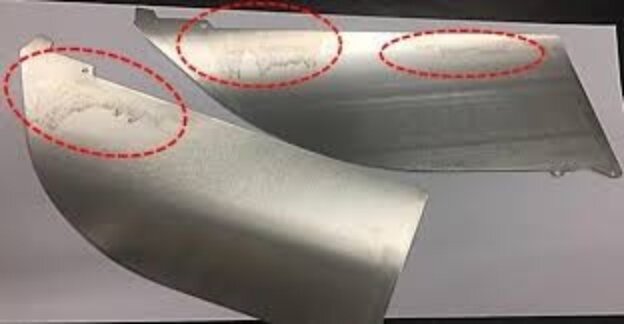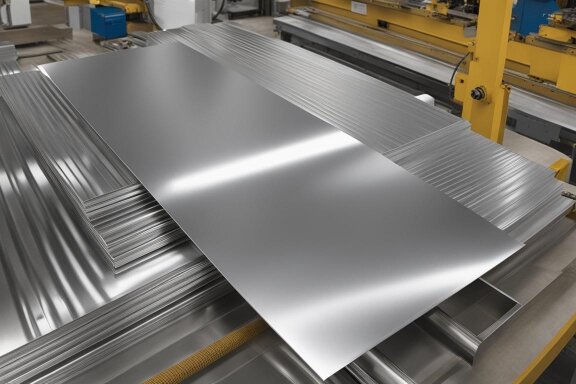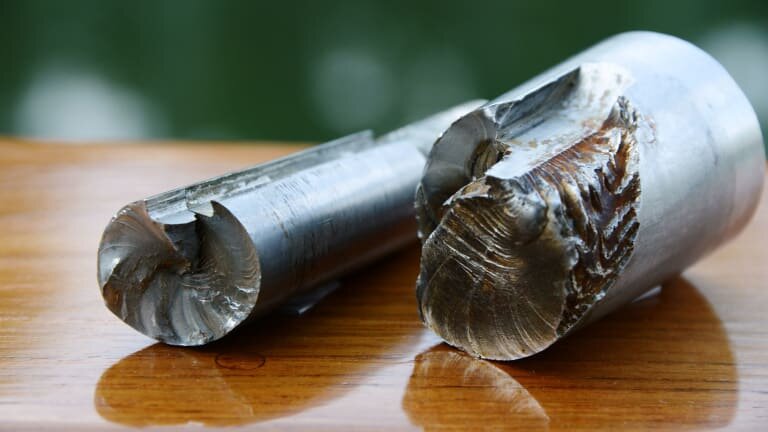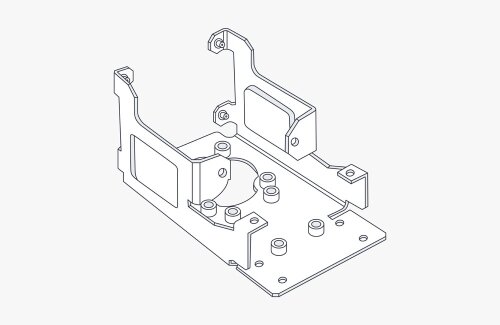Have you ever wondered whether aluminum or titanium is better for your next project? When picking metals for a project, strength, weight, and cost are significant. Choosing between titanium and aluminum depends on your needs. Get the facts before deciding.
For most projects, aluminum is the better choice due to its lower cost, easier machinability, and lighter weight. However, titanium excels in high-strength applications requiring corrosion resistance and biocompatibility. Your specific project requirements will determine which metal is best suited for your needs.
Let’s compare these two metals to help you make the right choice for your project. We’ll look at their key properties, strengths, and ideal applications.
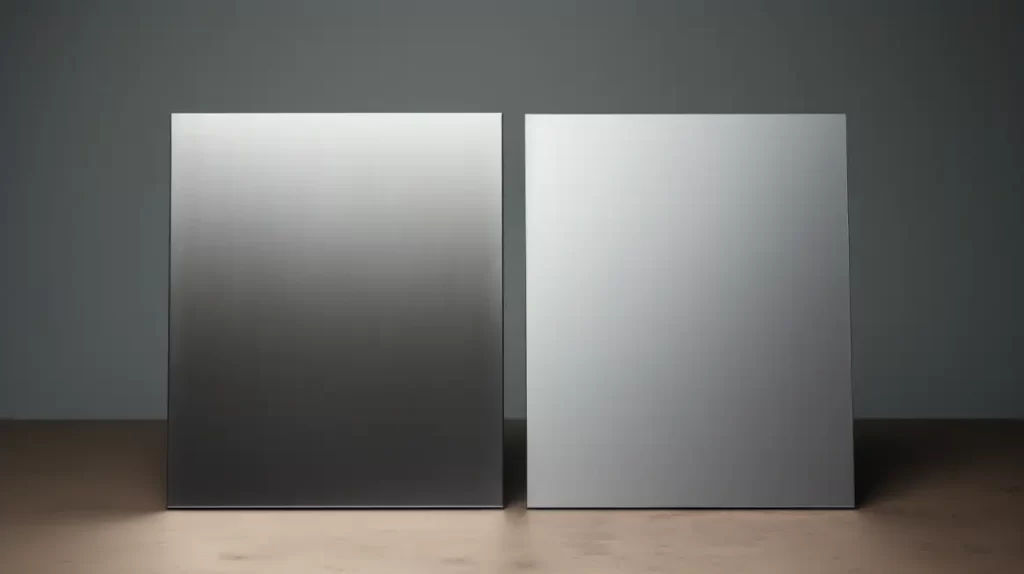
Overview of Titanium and Aluminum
Choosing the right material is a critical step in any project. The material you pick affects your final product’s performance, cost, and durability. Let’s explore two popular options: titanium and aluminum.
What is Titanium?
Titanium is a strong and lightweight metal. It has the same strength as steel but is 45% lighter. It also resists corrosion, even in seawater or chlorine. This makes it an excellent choice for the chemical, aerospace, and marine industries.
Titanium is both durable and versatile. It melts at 1,668°C and can be formed into tough yet light alloys. Because of this, it meets a wide range of technical needs.
What is Aluminum?
Aluminum is a silvery-white metal with many valuable qualities. It is the third most common element on Earth and the most abundant metal. This makes it easy to find and use.
One of aluminum’s best features is it’s lightweight. It weighs about one-third as much as steel or copper. Because of this, it is widely used in the aviation and automobile industries, where reducing weight is essential.

Titanium vs. Aluminum: Key Properties Comparison
Understanding the differences between titanium and aluminum starts with their key properties. Let’s compare their elemental composition, strength, durability, weight, and density.
Element Makeup
The elements in a metal affect how it works and where it is used. Titanium and aluminum are strong and lightweight, but their makeup makes them different.
Titanium is mostly titanium, with small amounts of oxygen, nickel, nitrogen, iron, carbon, and hydrogen. These extra elements comprise only 0.013% to 0.5% of the metal. Even in tiny amounts, they help improve strength and resistance to corrosion.
Aluminum has a more varied mix of elements. It is mainly aluminum but contains zirconium, zinc, chromium, silicon, magnesium, titanium, manganese, iron, and copper. These elements help create different aluminum alloys for other needs.
Strength and Durability
The strength of a metal is its ability to resist permanent deformation. However, different metals have different strength levels depending on their composition and intended use.
Tensile Strength: Which One Holds More Weight?
Titanium is generally stronger than aluminum.
- Titanium alloys: 600–1600 MPa
- Aluminum alloys: 70–700 MPa
For example, the titanium alloy Ti-6Al-4V has a tensile strength of about 1100 MPa, while a strong aluminum alloy like 7075-T6 reaches around 572 MPa.
Fatigue Resistance: How Well Do They Handle Repeated Stress?
Titanium has excellent fatigue resistance, making it great for long-term use.
- Ti-6Al-4V (annealed): Fatigue strength of 450–590 MPa for 10⁷ cycles
- Titanium alloys: Fatigue limit of 350–500 MPa
Aluminum alloys, however, do not have a clear fatigue limit. Their internal structure makes them more likely to weaken over time when exposed to repeated stress. This makes titanium better for applications that require long-lasting performance.
Weight and Density
The weight of a metal affects its suitability for various applications.
Titanium vs Aluminum Weight: Which One Is Lighter?
Aluminum is much lighter than titanium.
- Aluminum density: 2.7 g/cm³
- Titanium density: 4.5 g/cm³
This means aluminum is about 66% lighter than titanium. Because of this, aluminum is often the better choice when weight reduction is a priority.
Balancing Strength and Weight
Even though titanium is heavier, it has a better strength-to-weight ratio.
- Titanium: 187 kN·m/kg
- Aluminum: 158 kN·m/kg (varies by alloy and treatment)
This means titanium’s strength allows engineers to use less material to achieve the same performance as aluminum in industries like aerospace, where both strength and weight matter; the choice depends on the specific design needs.
Corrosion Resistance
A metal’s ability to resist corrosion depends on its protective surface layer.
Titanium’s Natural Corrosion Resistance
Titanium resists corrosion exceptionally well. When exposed to air and moisture, it forms a thin but strong oxide layer that protects it from damage. Titanium is extremely resistant to seawater, wet chlorine, and organic chlorides, making it ideal for harsh environments.
Aluminum’s Oxidation and Protective Coatings
Aluminum also forms a natural oxide layer when it meets air. This layer provides some protection but is not as strong as titanium’s. To improve its resistance, aluminum often goes through anodizing, creating a thicker protective coating.
Thermal and Electrical Conductivity
Metals differ in how they transfer heat and electricity.
How They Handle Heat
Titanium does not conduct heat well. Its thermal conductivity is 15–25 W/m·K, lower than many metals. This can be useful for insulation but is a disadvantage in heat transfer applications. Its conductivity also decreases as temperatures rise.
Aluminum, on the other hand, is much better at conducting heat. It has about twice the thermal conductivity per unit weight than copper-based materials. This makes it a top choice for applications needing efficient heat dissipation.
Electrical Conductivity: Which One Carries More Current?
Titanium is a poor electrical conductor. Its conductivity is around 2.3 × 10⁶ S/m and even lower in alloys like Ti-6Al-4V, which ranges from 1.2 – 1.5 × 10⁶ S/m.
Aluminum is much better at conducting electricity. Pure aluminum has a 33.3 × 10⁷ S/m conductivity, about 61% of copper’s standard. Because of this, aluminum is widely used in electrical wiring, especially where weight matters.
Machinability and Workability
The ease of cutting, forming, and welding a metal affects manufacturing costs and efficiency.
How Easy Are They to Cut, Weld, and Shape?
Titanium is hard to machine. It reacts quickly with cutting tools, causing chips to stick and wear down the tools quickly. Its low thermal conductivity leads to overheating, and its tendency to harden during work makes machining even more challenging.
Aluminum, in contrast, is much easier to work with. It can be cut, welded, and shaped using various methods. Its flexibility makes it an excellent choice for milling and turning.
How Do They Affect Manufacturing Costs?
Titanium’s processing difficulty raises its cost. It requires specialized tools and skilled workers, making production more expensive. Depending on the grade and quantity, titanium can cost between $30 and $150 per pound.
Aluminum is cheaper to manufacture. It is easier to cut and shape and has many cost-effective ways to process it. However, prices vary depending on the alloy, production method, and order size.
Here’s a quick comparison table for Titanium and Aluminum:
| Property | Titanium | Aluminum |
|---|---|---|
| Tensile Strength | High (600-1600 MPa) | Medium (70-700 MPa) |
| Corrosion Resistance | Excellent | Good with coatings |
| Density | High (4.5 g/cm³) | Low (2.7 g/cm³) |
| Thermal Conductivity | Low (15-25 W/m·K) | High (237 W/m·K) |
| Electrical Conductivity | Low (2.3 x 10^6 S/m) | High (33.3 x 10^7 S/m) |
| Machinability | Difficult | Easy |
| Cost | High | Relatively Low |
| Key Applications | Aerospace components, medical implants, high-performance automotive parts | Lightweight structures in aerospace, automotive body panels, marine applications, consumer electronics casings |
Choosing the Right Material for Your Project
Picking the right material is crucial for your project’s success. Titanium and aluminum have their strengths, but the best choice depends on your needs. Let’s break it down.
Key Factors to Consider
- Strength Requirements: Titanium is the better choice if your project needs high strength and durability. For lighter, less demanding applications, aluminum works well.
- Weight: Aluminum is lighter, making it ideal for weight-sensitive projects. Titanium is heavier but offers a better strength-to-weight ratio.
- Corrosion Resistance: Titanium excels in harsh environments, while aluminum may need protective coatings.
- Cost: Aluminum is more cost-effective for large-scale production. Titanium is more expensive but offers long-term durability.
- Machinability: Aluminum is easier to work with, reducing production time and costs. Titanium requires specialized tools and expertise.
Decision-Making Guide Based on Application
- Aerospace and Aviation: Choose titanium for critical components like engines and airframes. Use aluminum for body panels and interior parts.
- Automotive Industry: Aluminum reduces weight in body panels and engine blocks. Titanium suits high-performance parts like exhaust systems.
- Medical Field: Titanium is the go-to for implants and surgical tools. Aluminum is better for non-implant devices.
- Marine and Offshore: Titanium is ideal for corrosion-prone parts like propellers and hulls. Aluminum works for boat structures with protective coatings.
- Consumer Electronics: Aluminum is perfect for lightweight, durable devices. Titanium is reserved for premium, high-end products.
Conclusion
Choosing between titanium and aluminum depends on your project’s specific needs. When deciding, consider factors like strength, weight, corrosion resistance, budget, and ease of production. Both materials have unique advantages, so your choice depends on your priorities.
Still unsure which material is best for your project? Let us help you make the right decision. Contact us today for expert advice and a free quote. We’re here to support you from design to production. Get a Free Quote Now!
Hey, I'm Kevin Lee

For the past 10 years, I’ve been immersed in various forms of sheet metal fabrication, sharing cool insights here from my experiences across diverse workshops.
Get in touch

Kevin Lee
I have over ten years of professional experience in sheet metal fabrication, specializing in laser cutting, bending, welding, and surface treatment techniques. As the Technical Director at Shengen, I am committed to solving complex manufacturing challenges and driving innovation and quality in each project.

